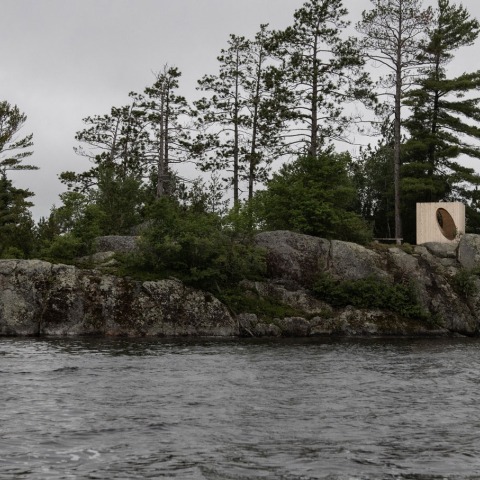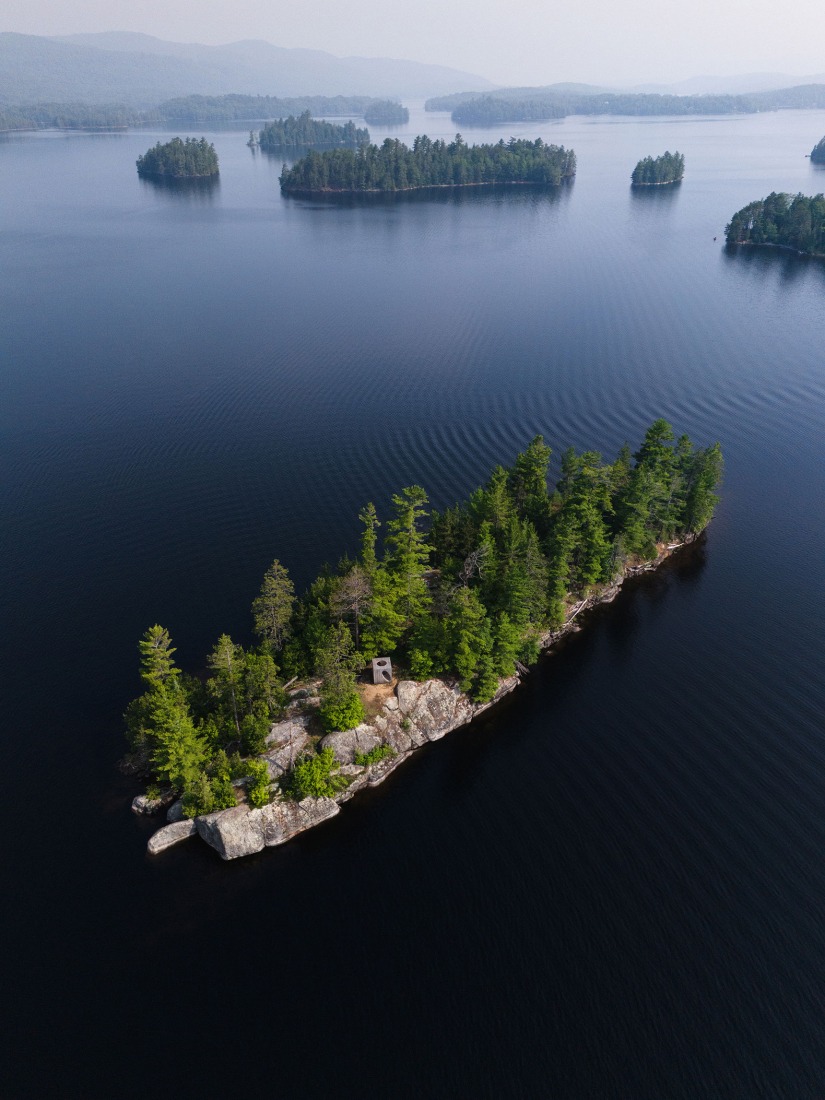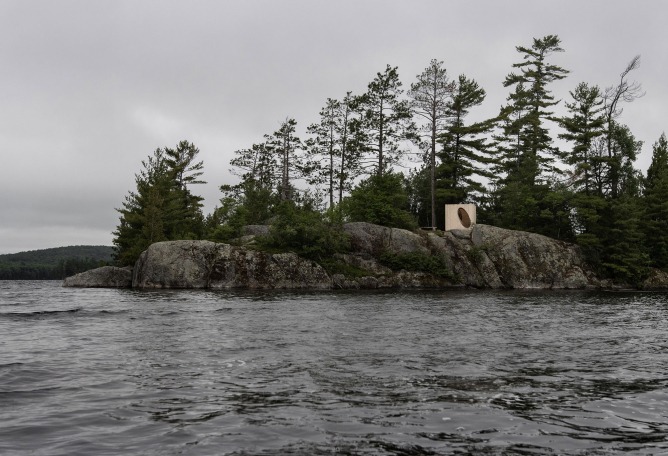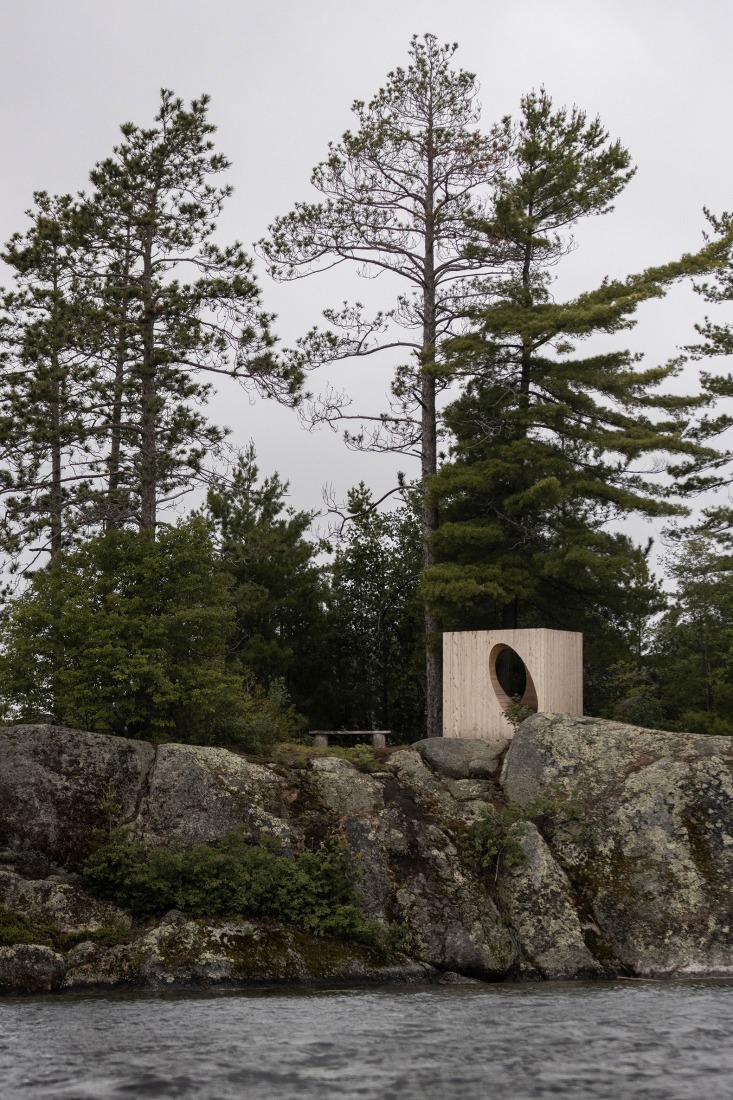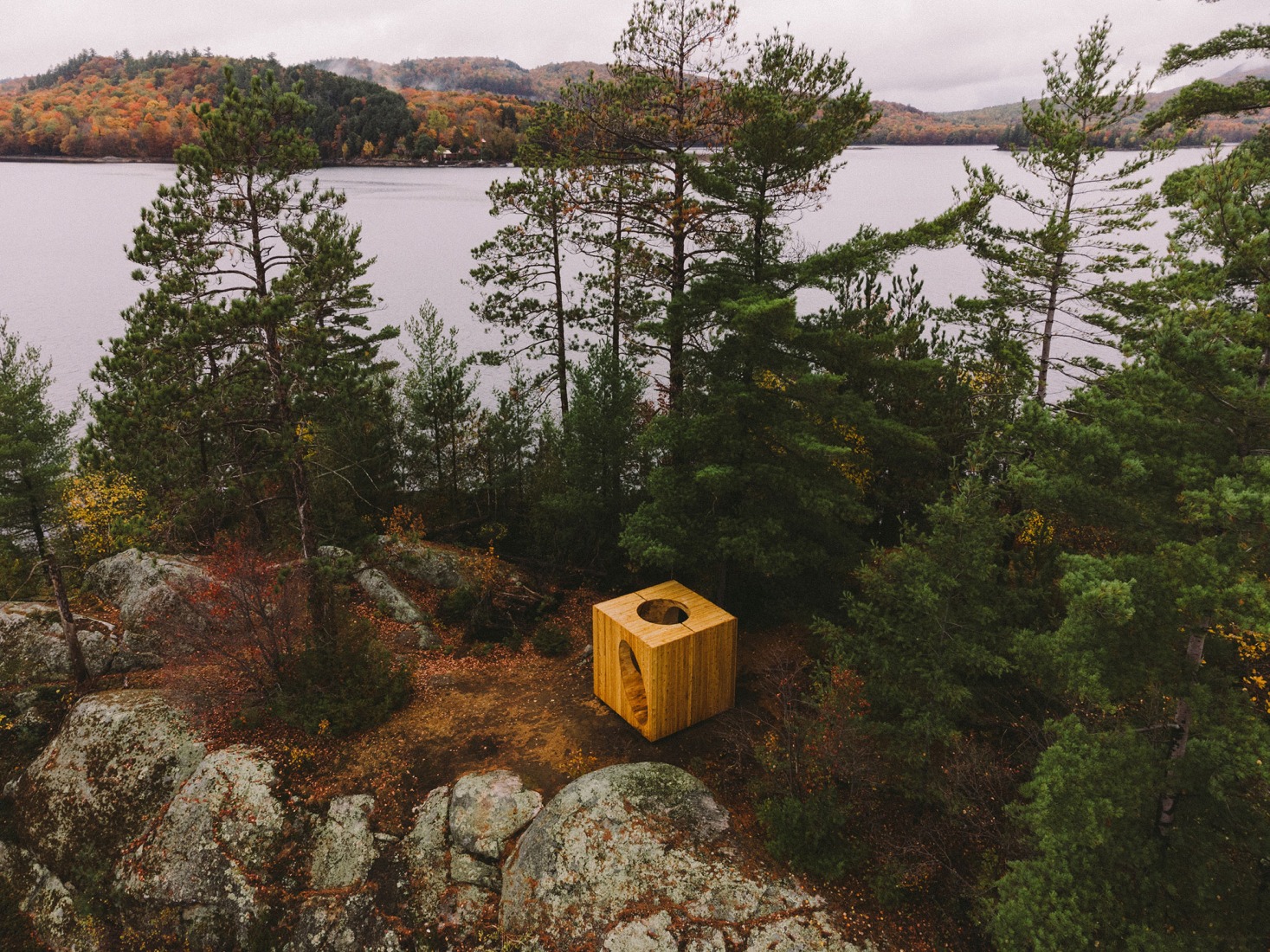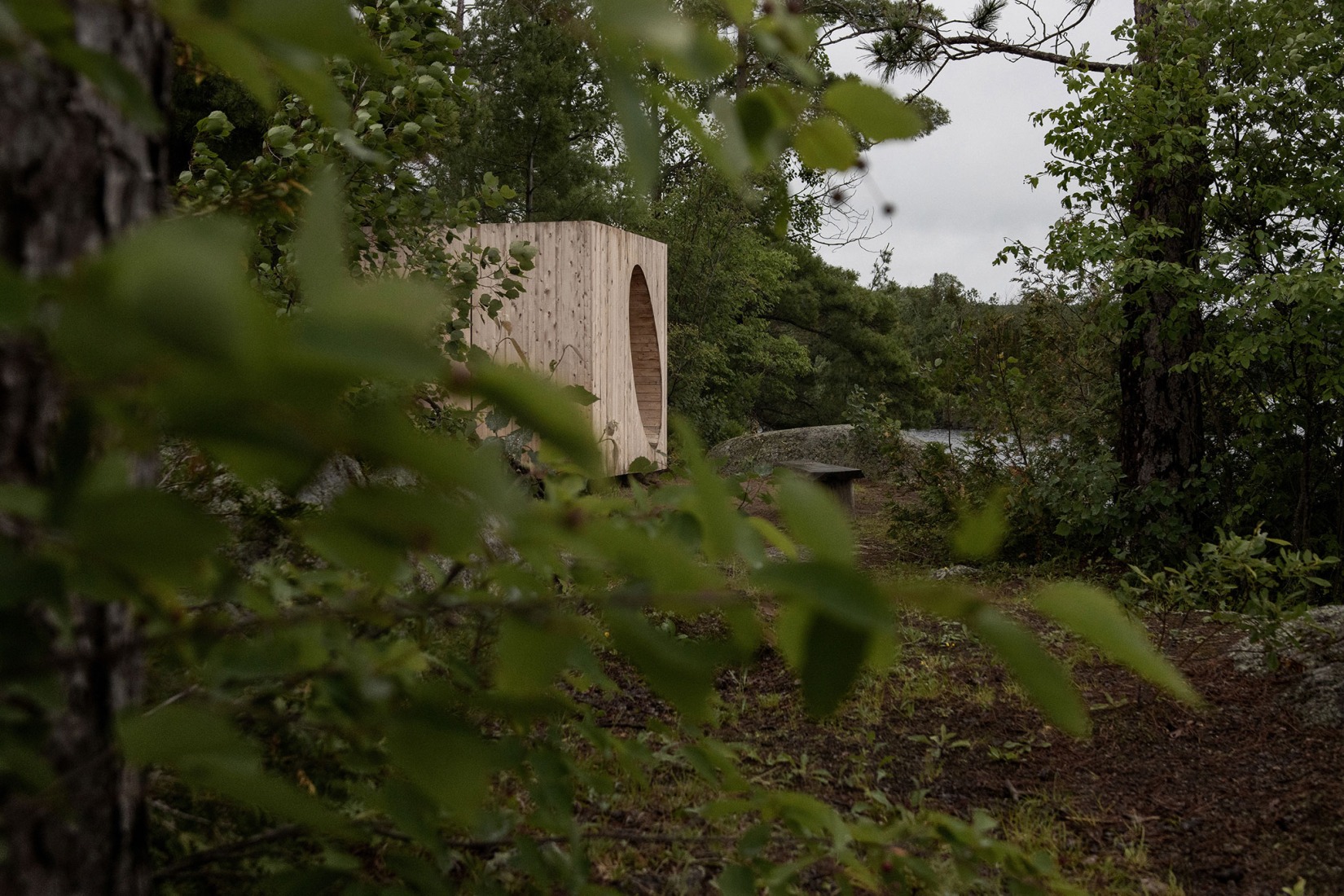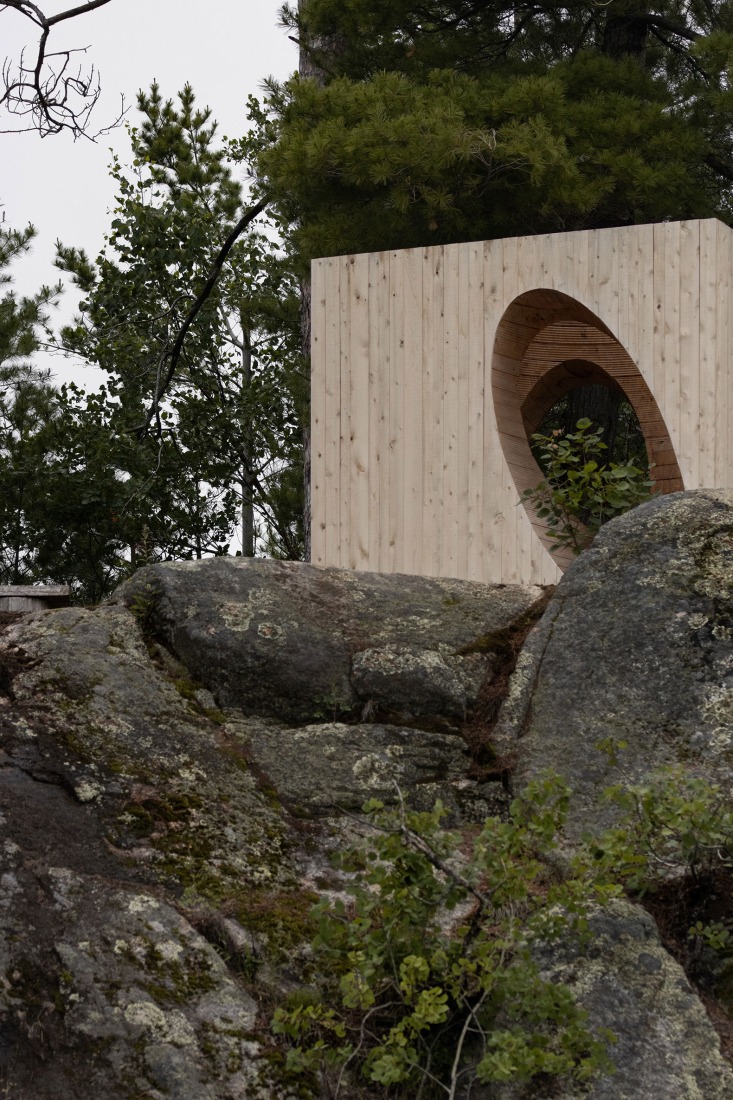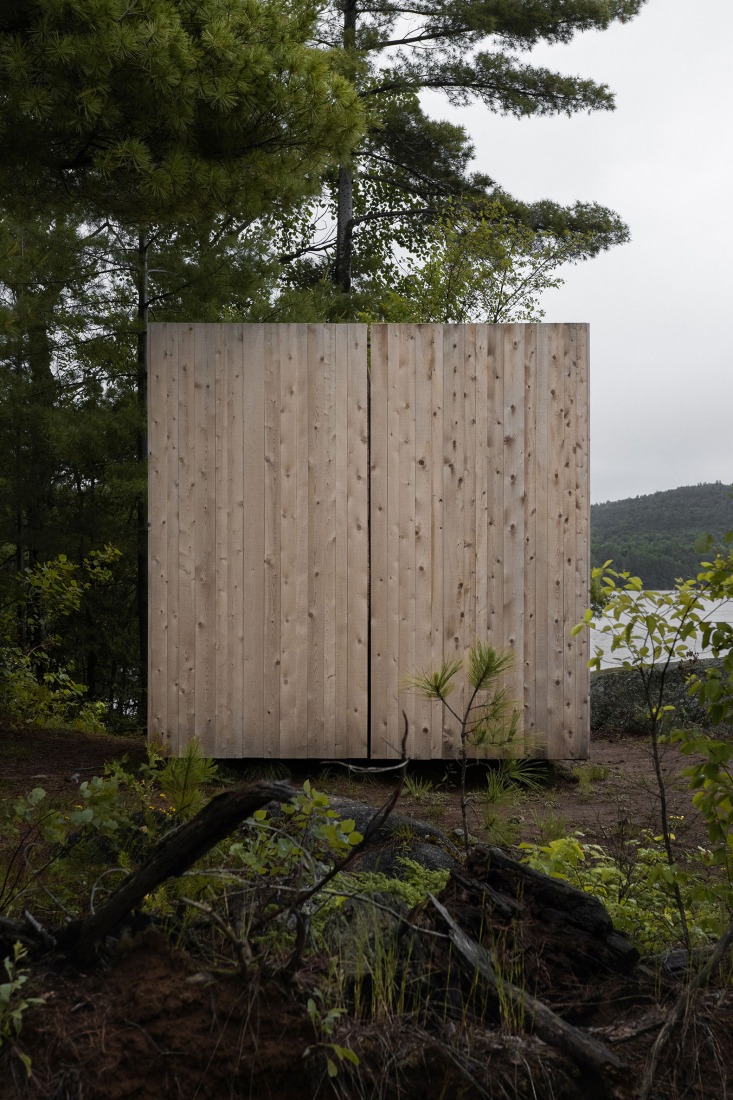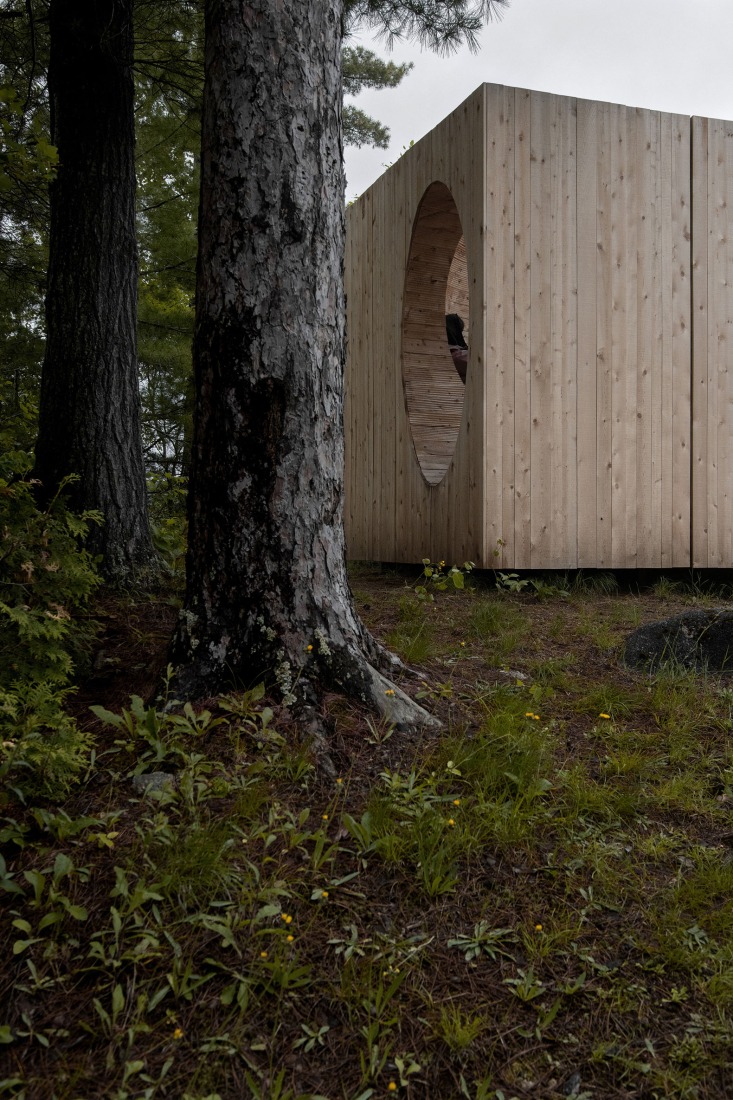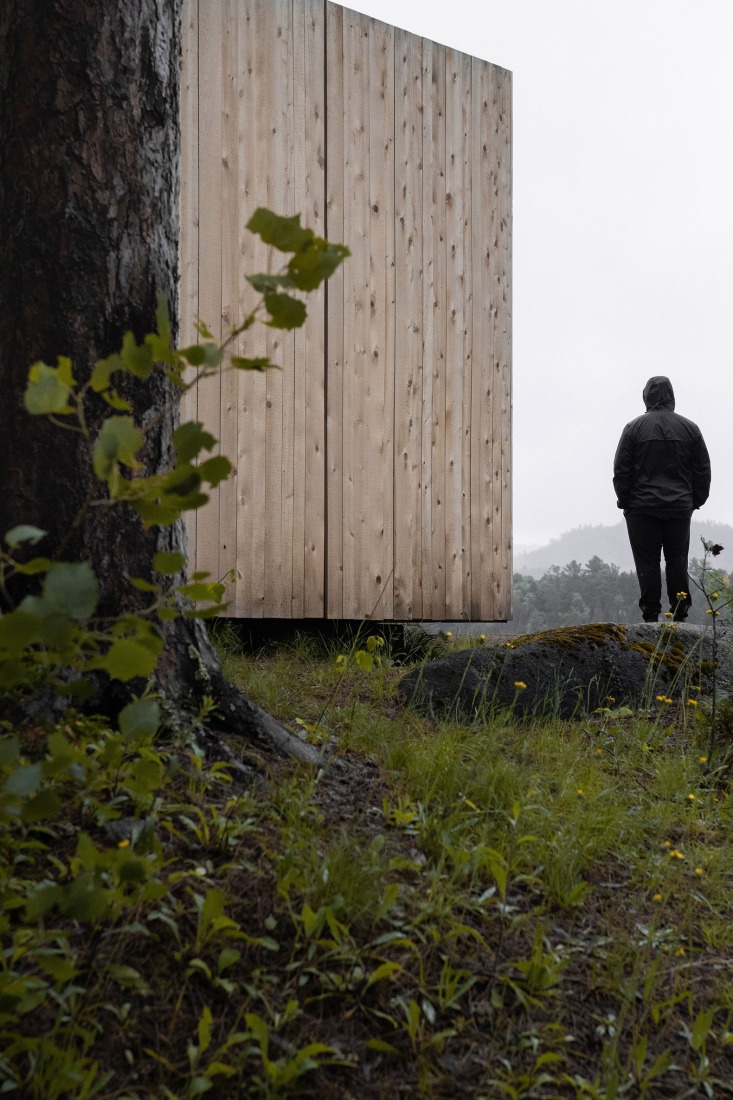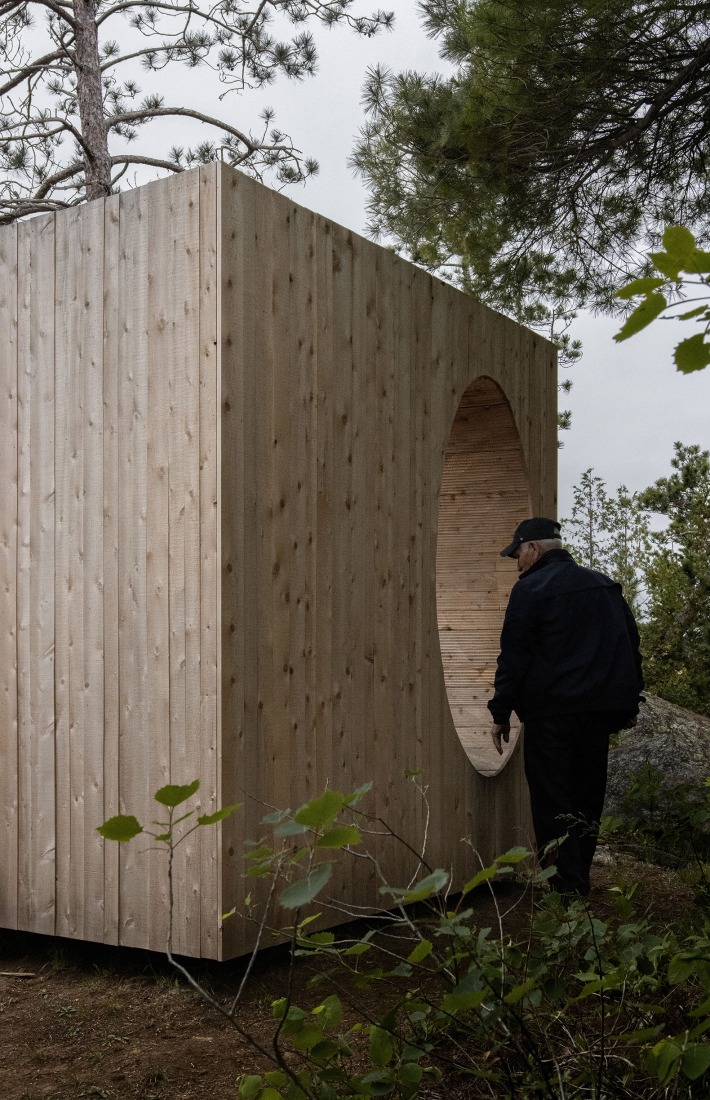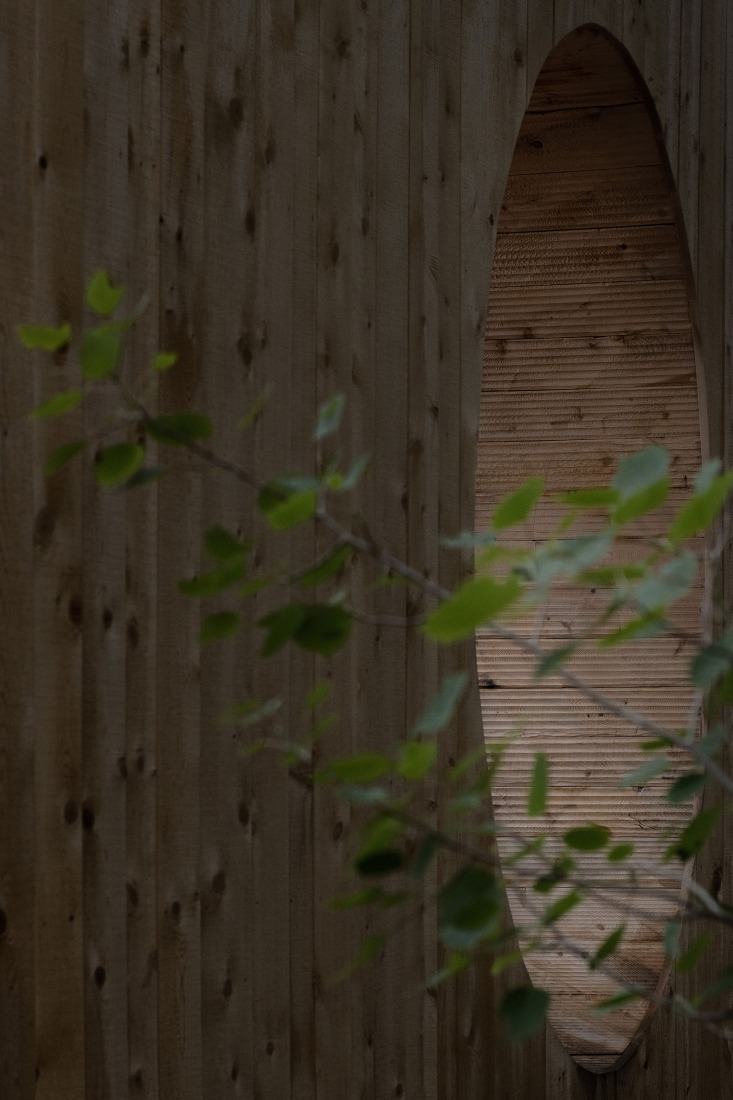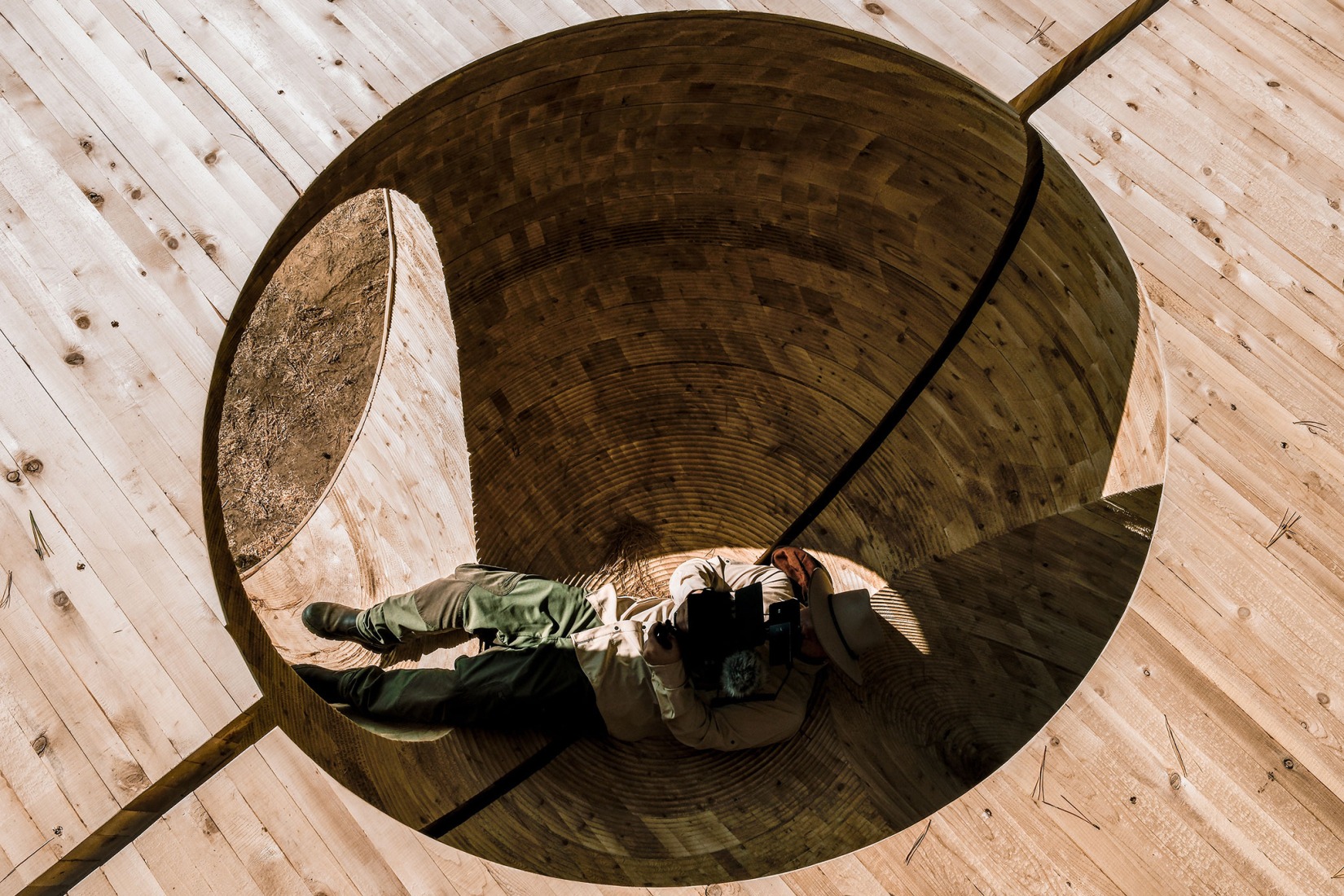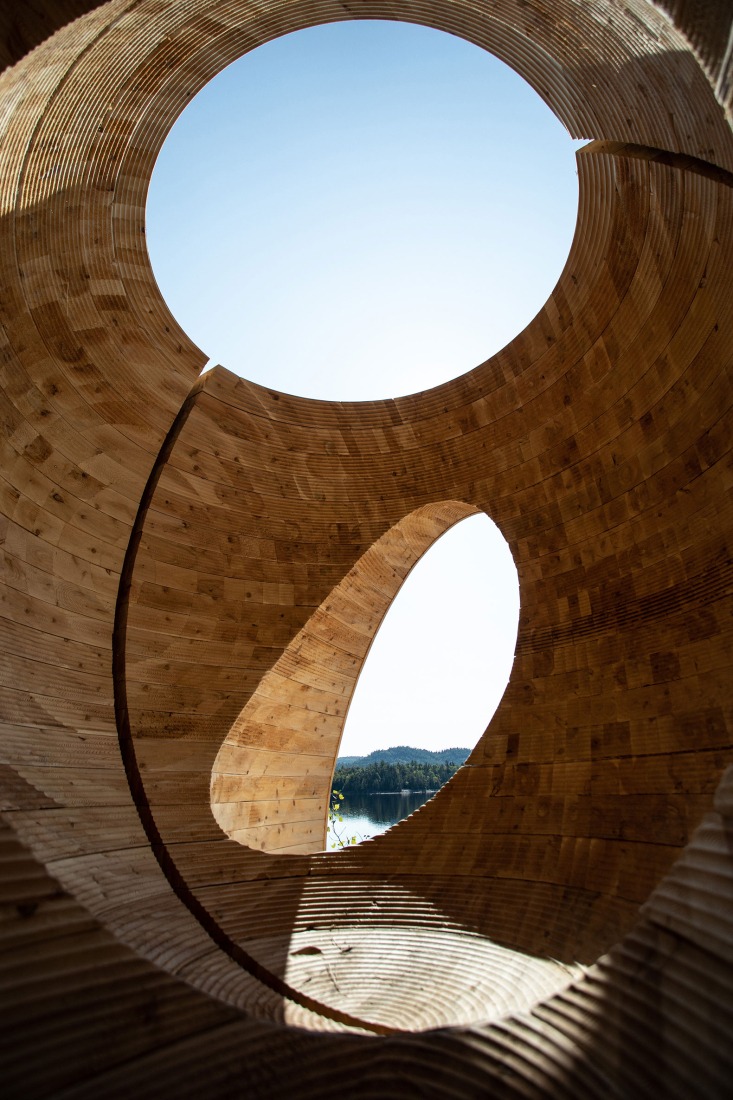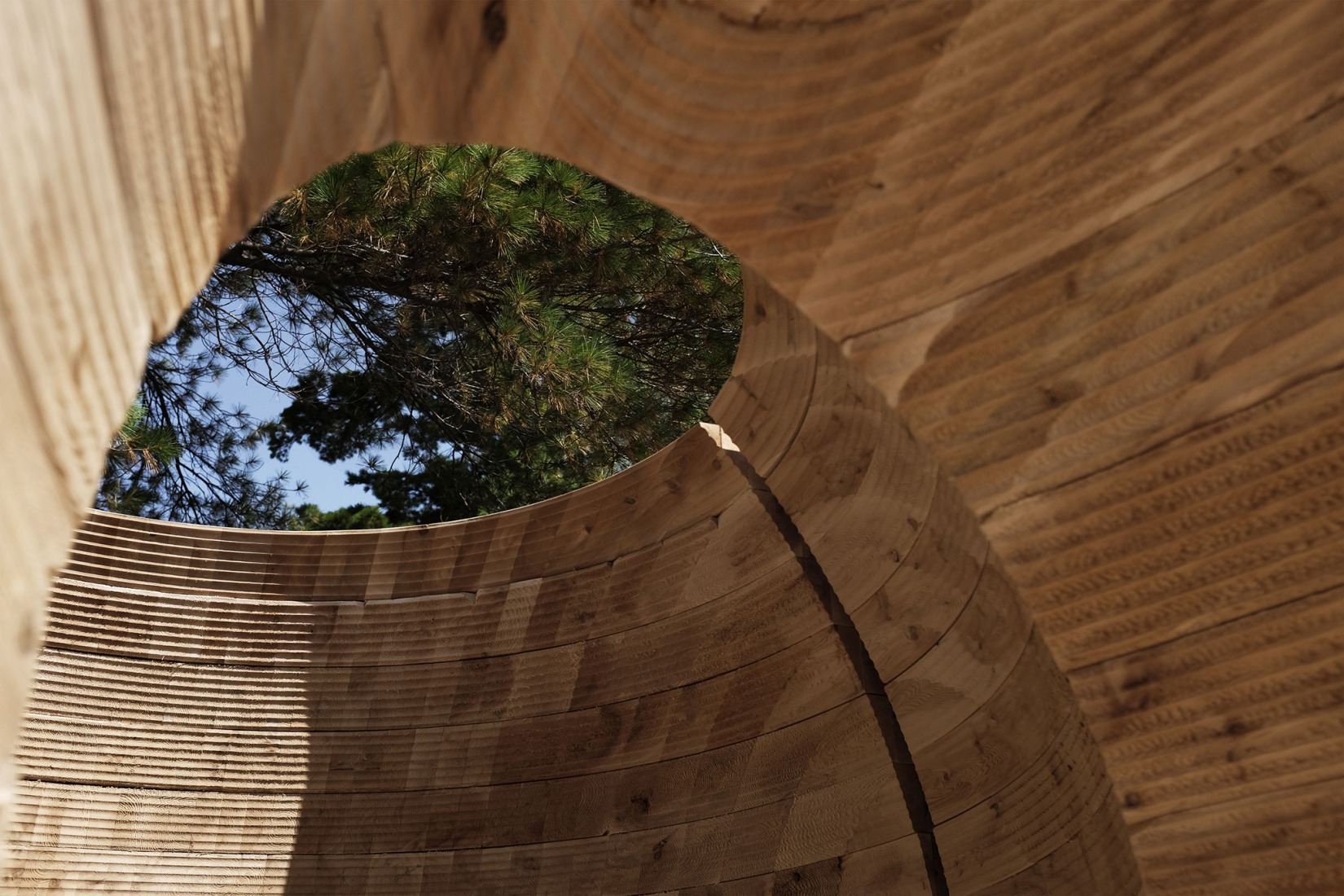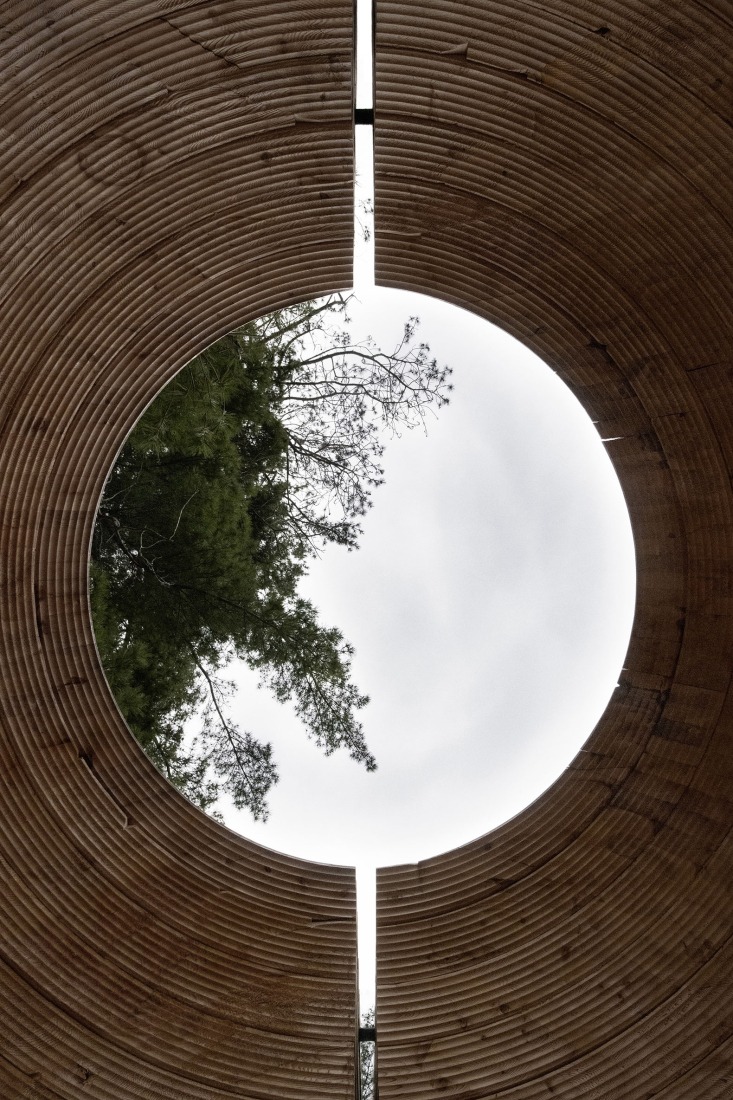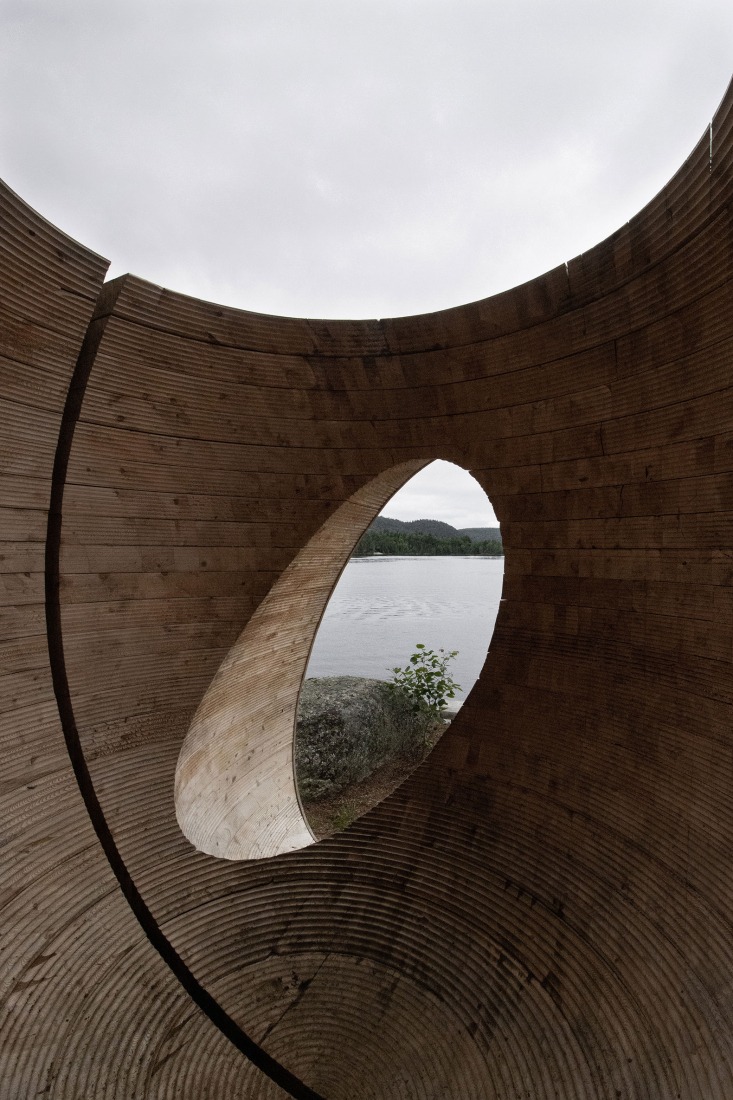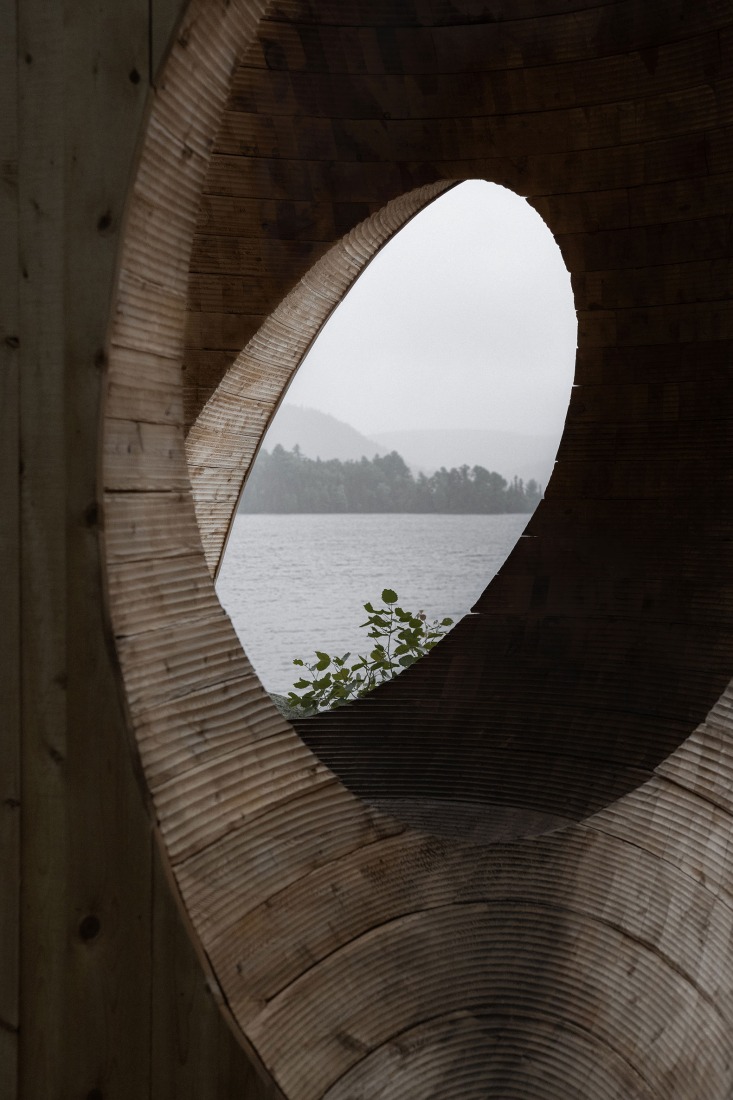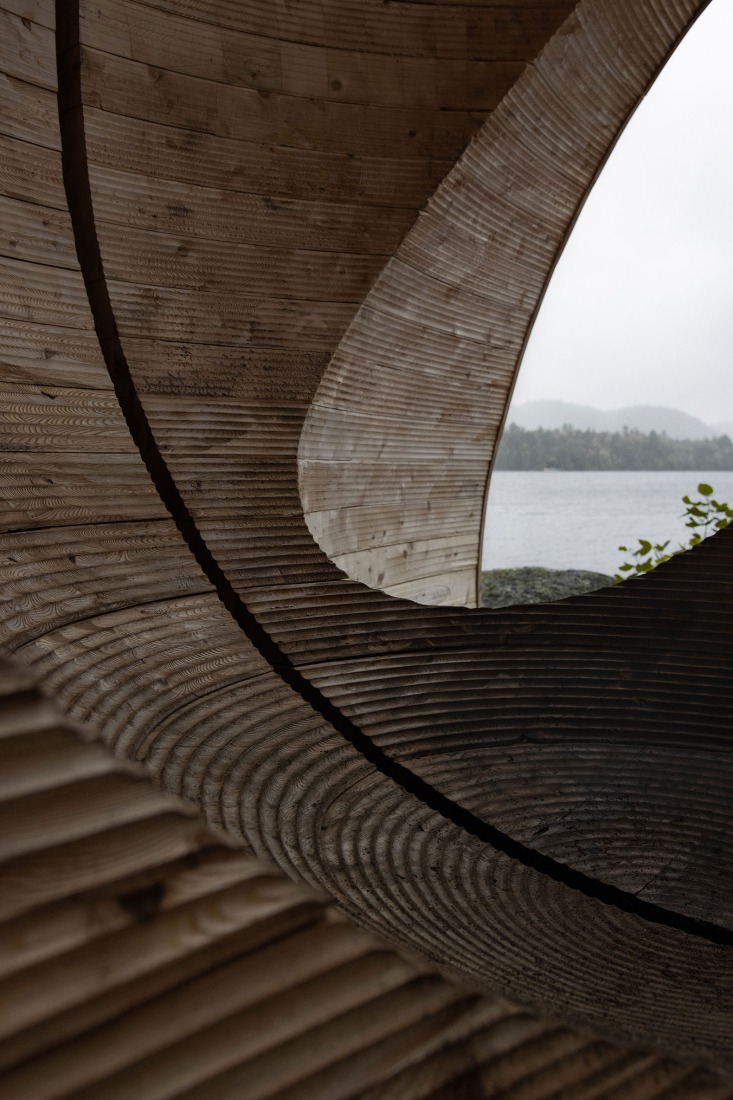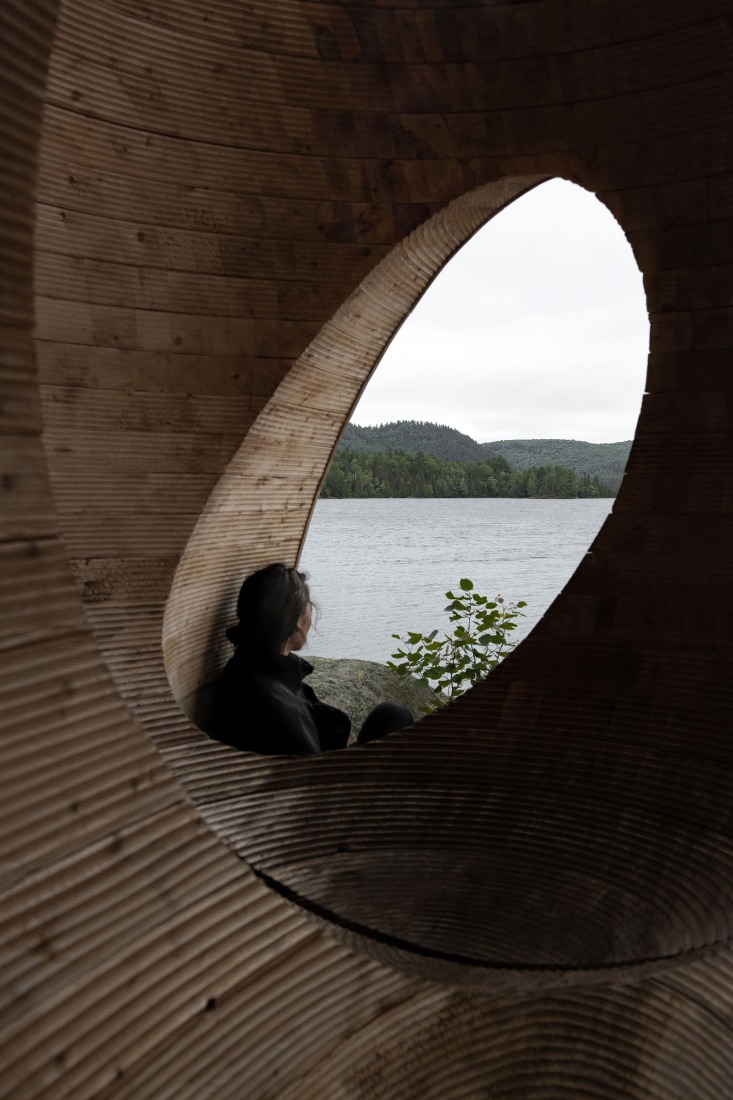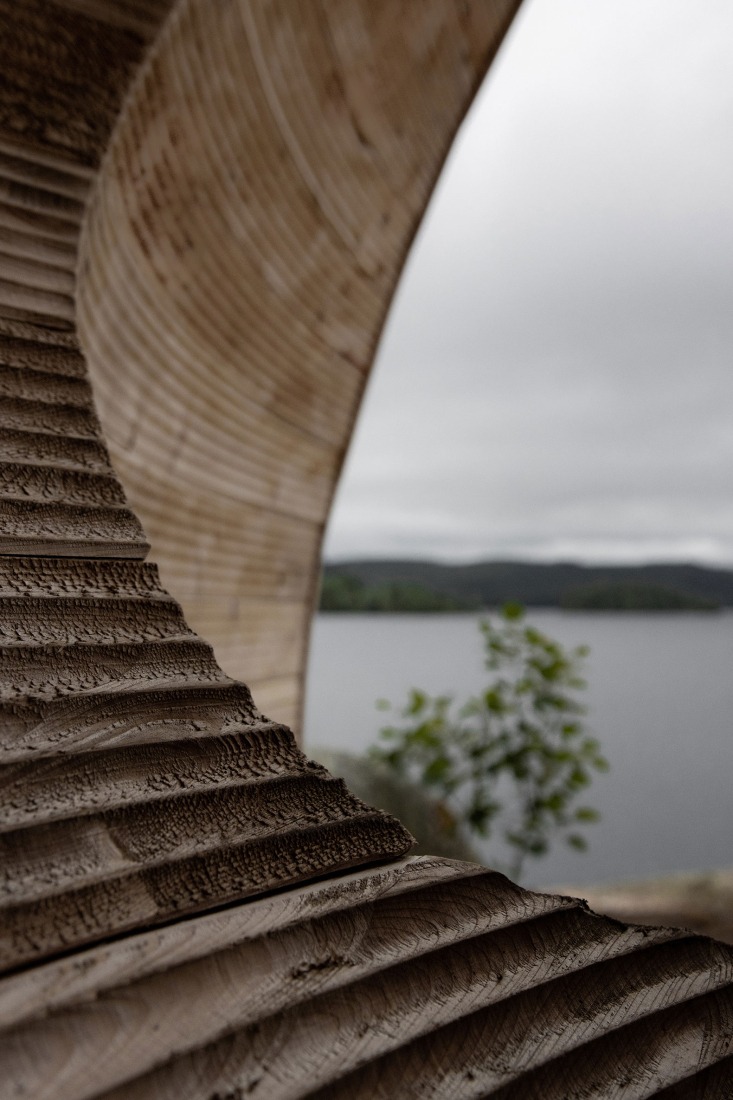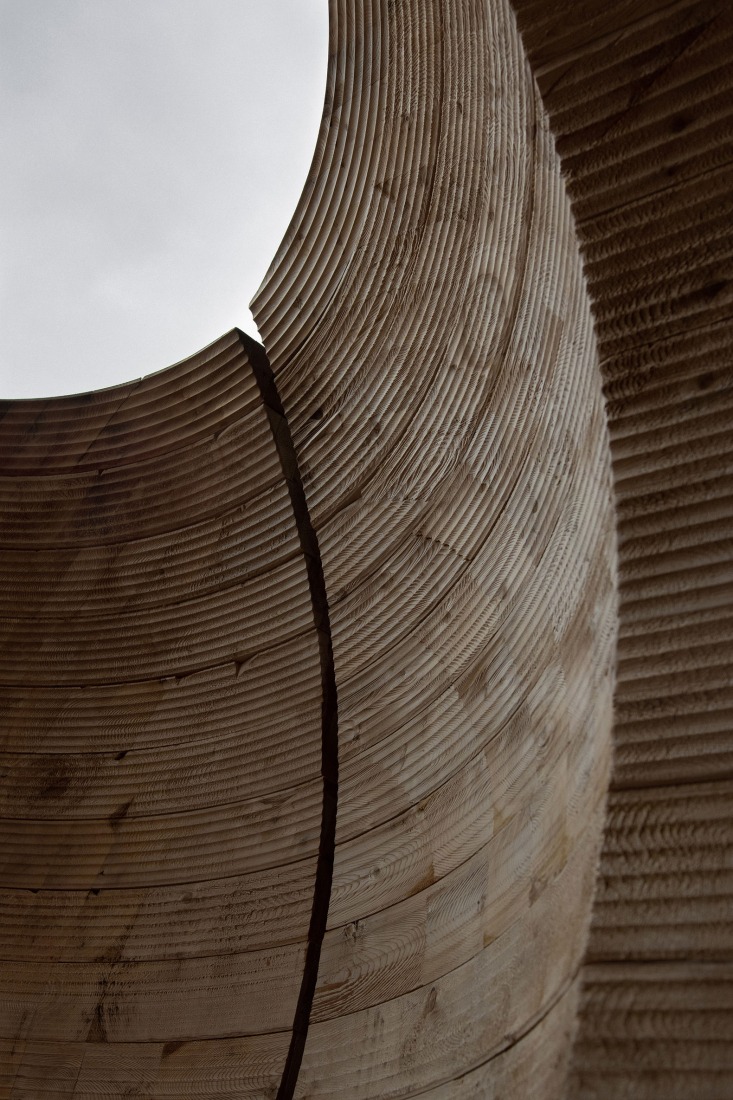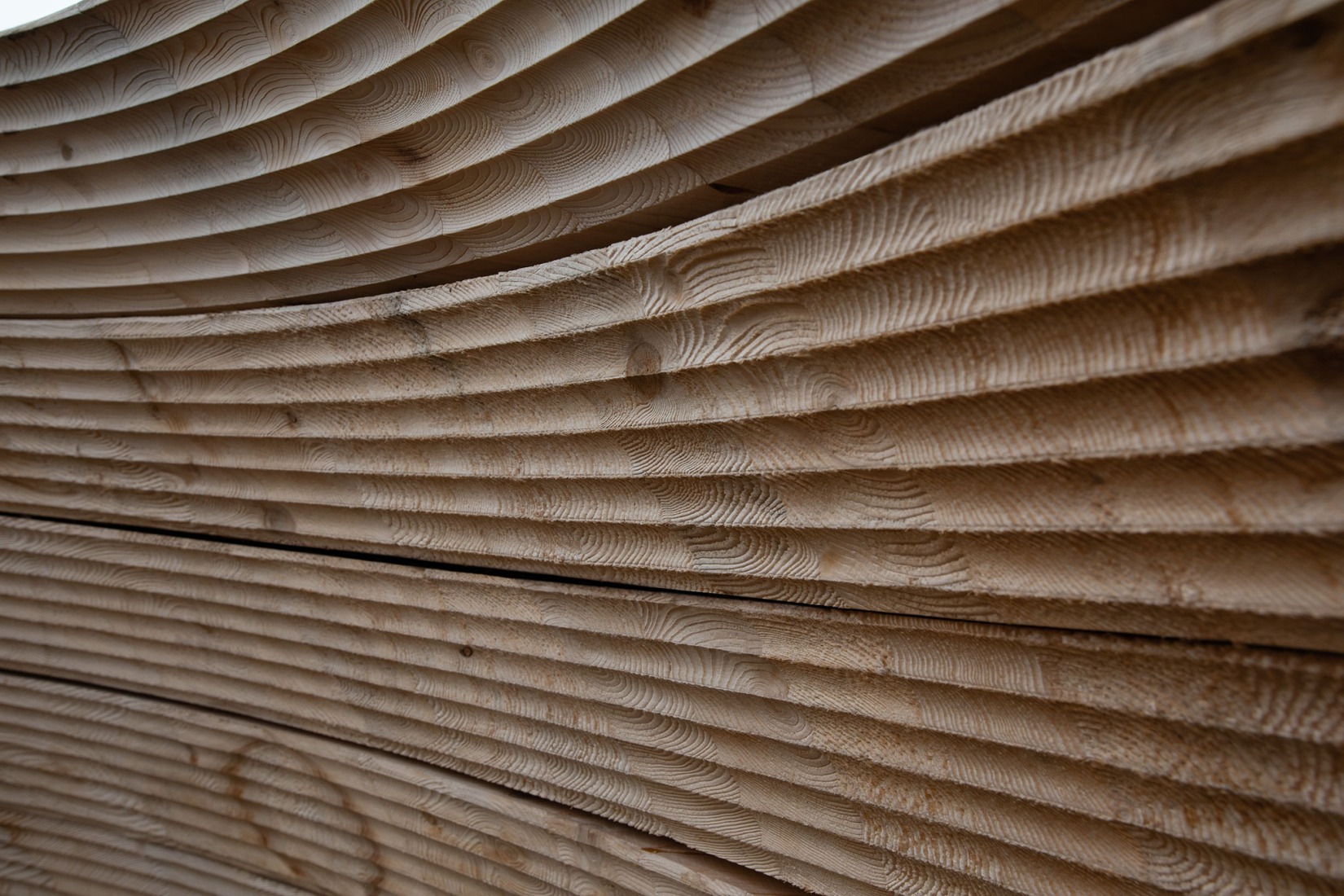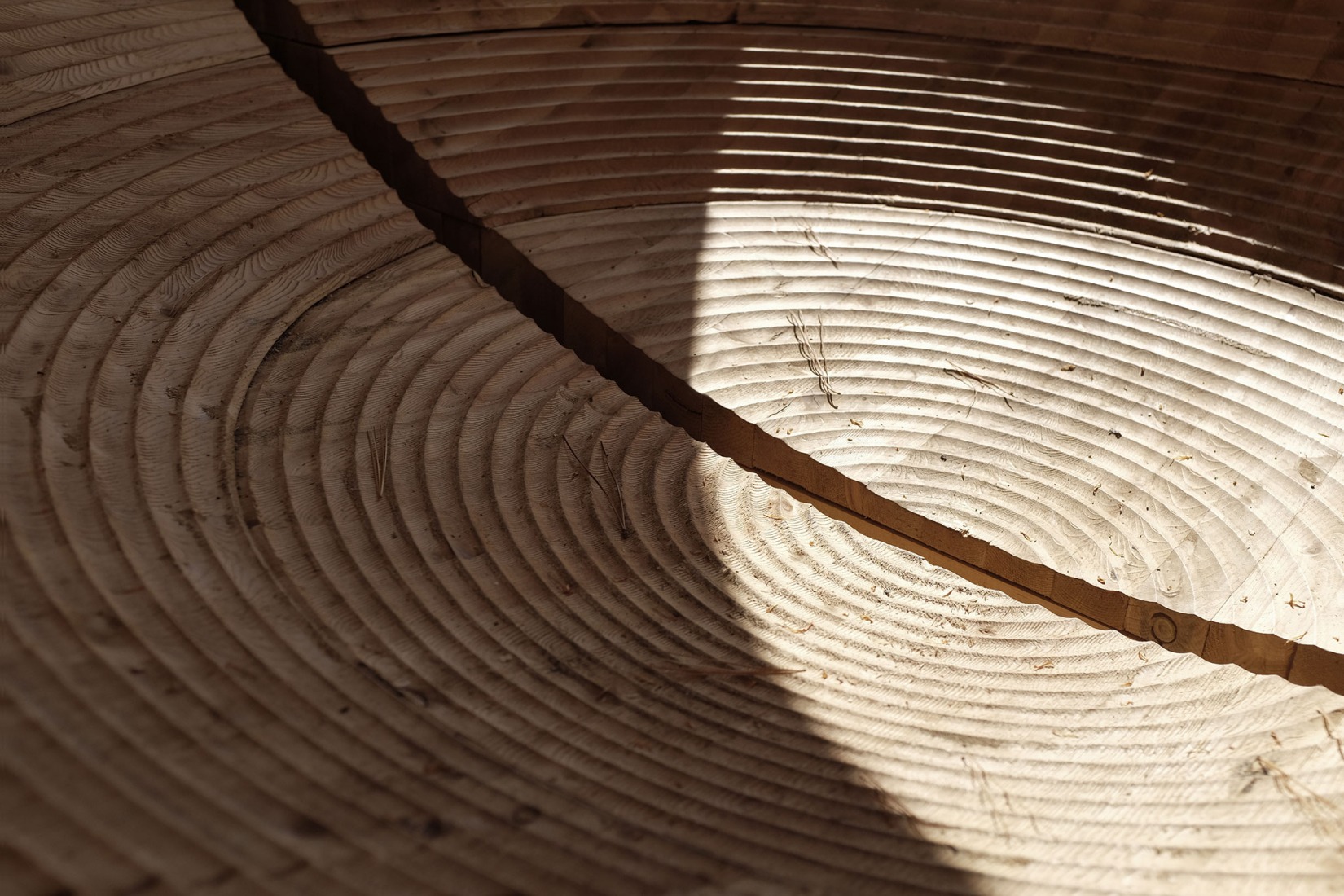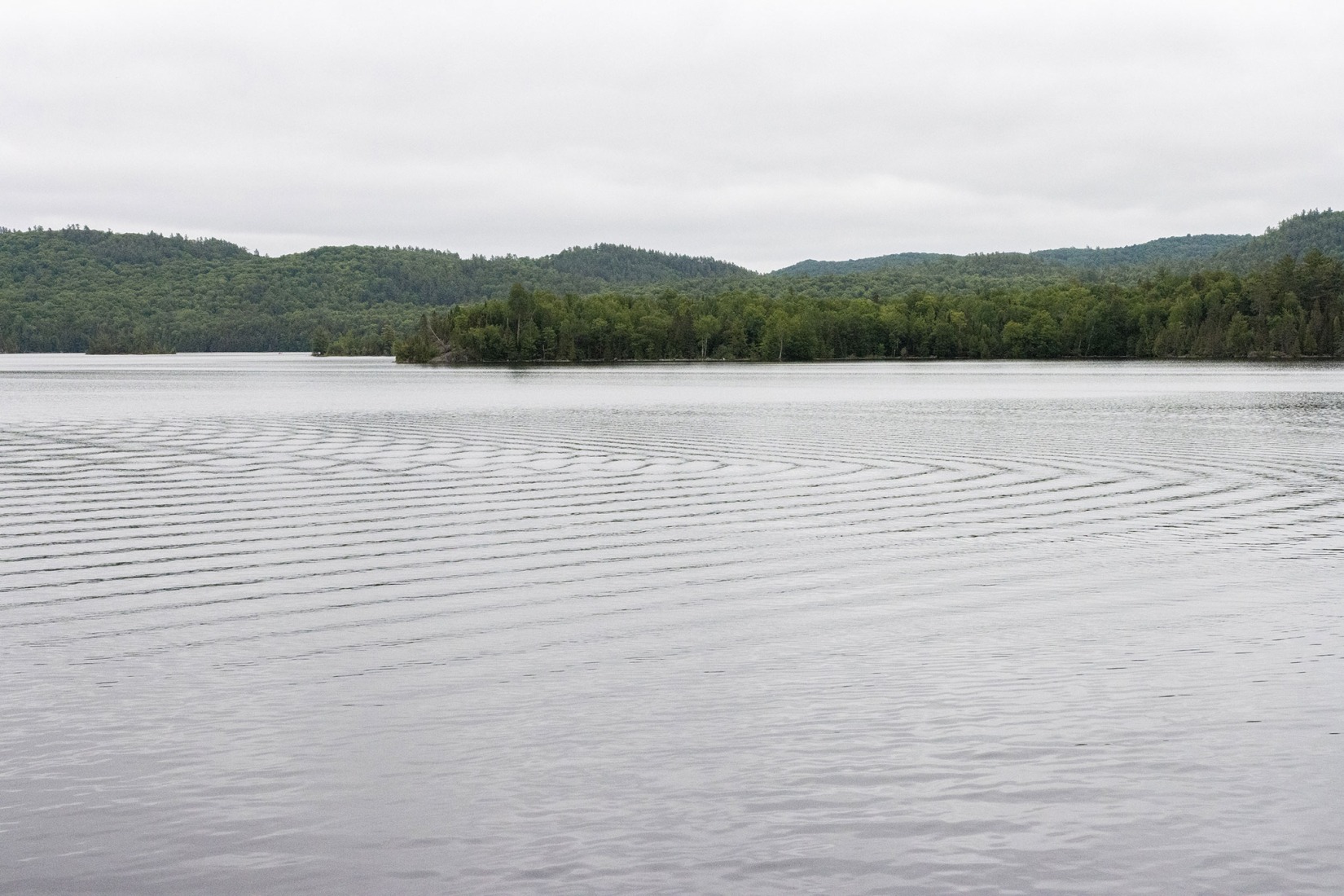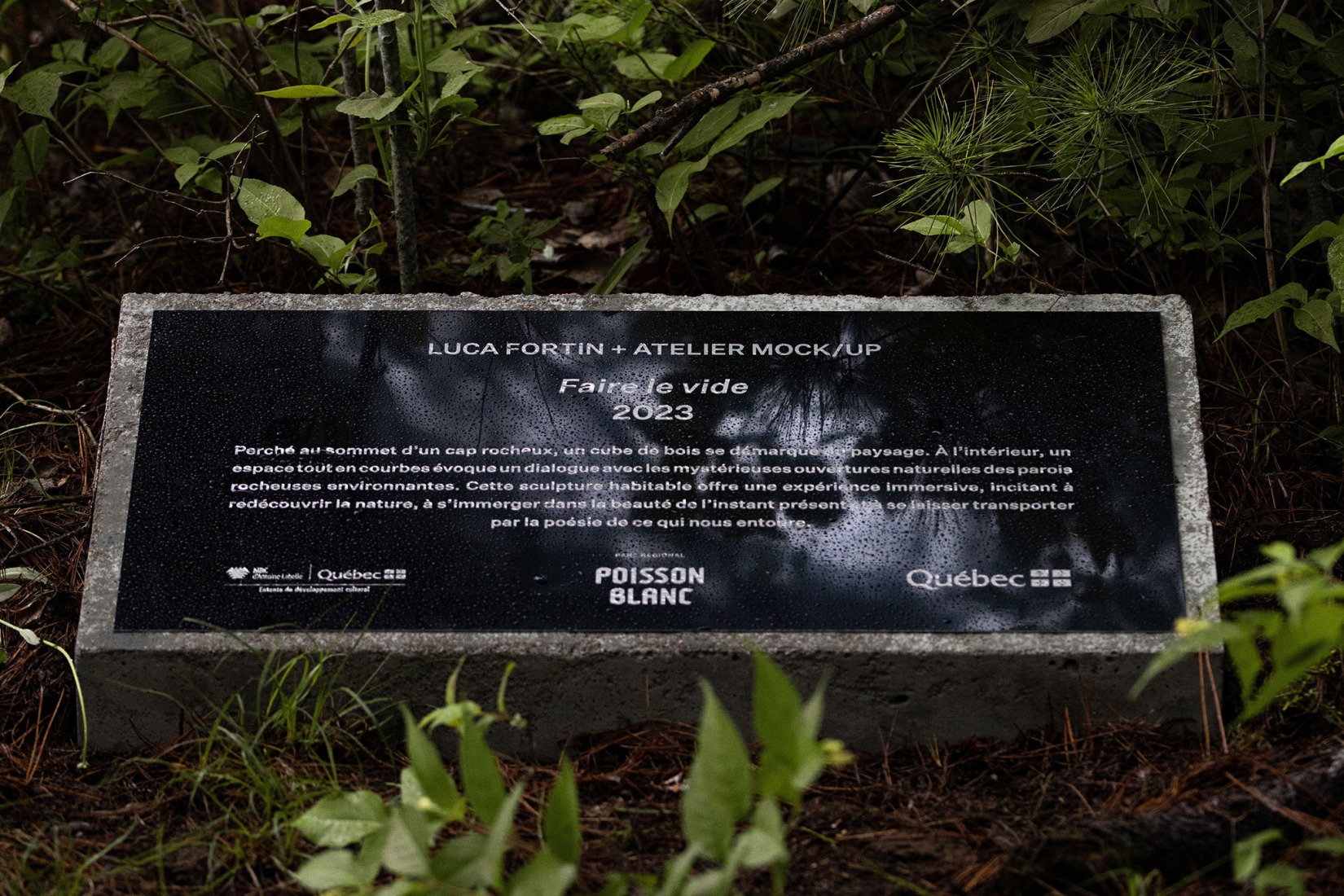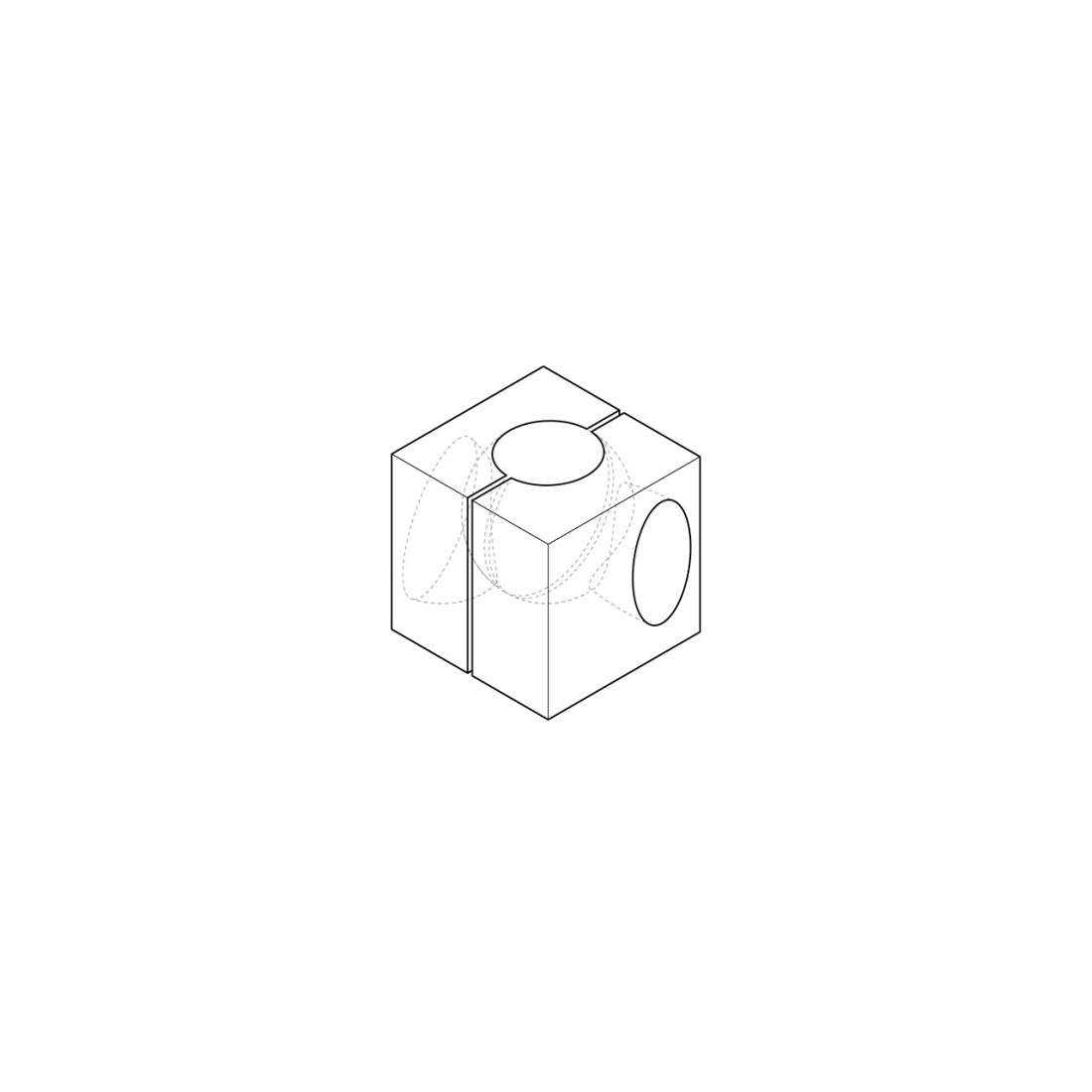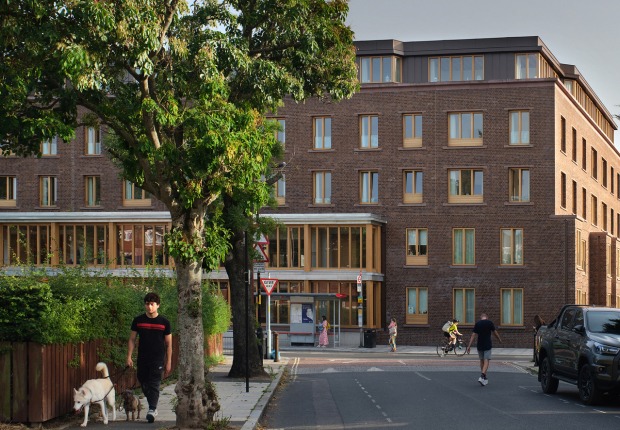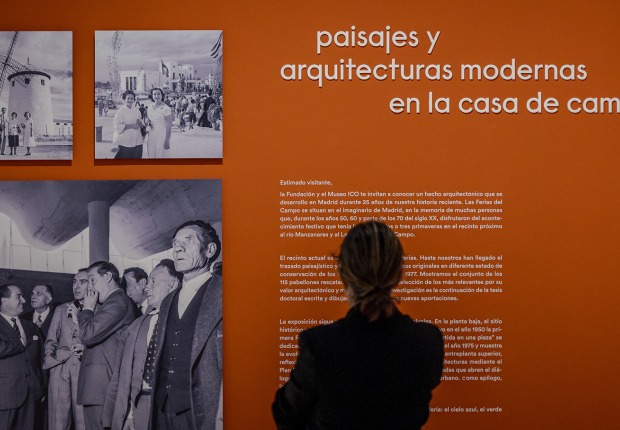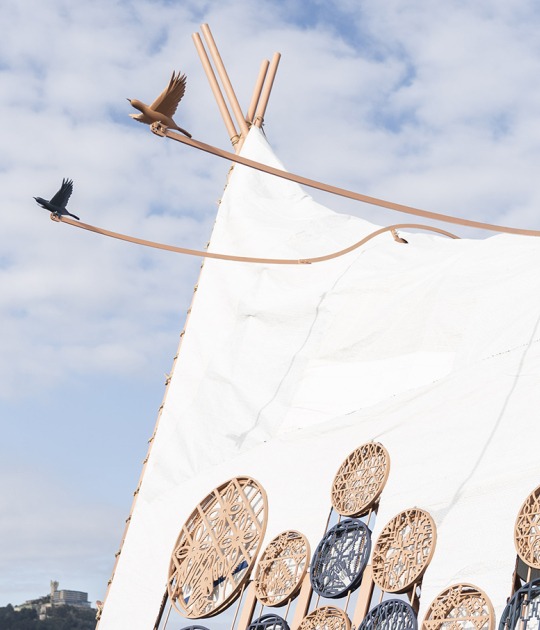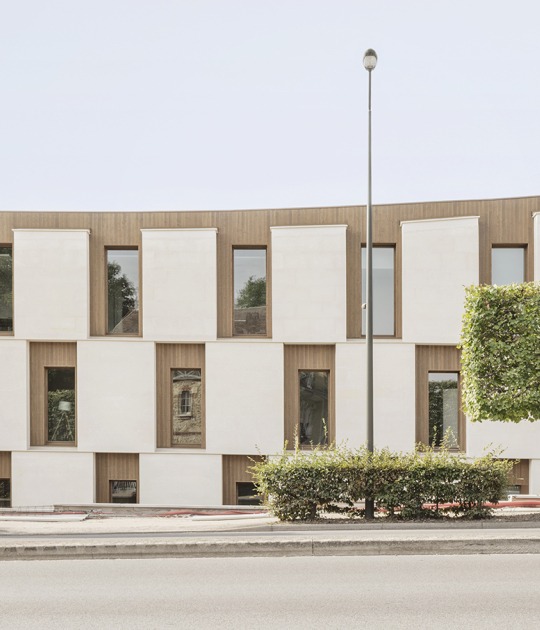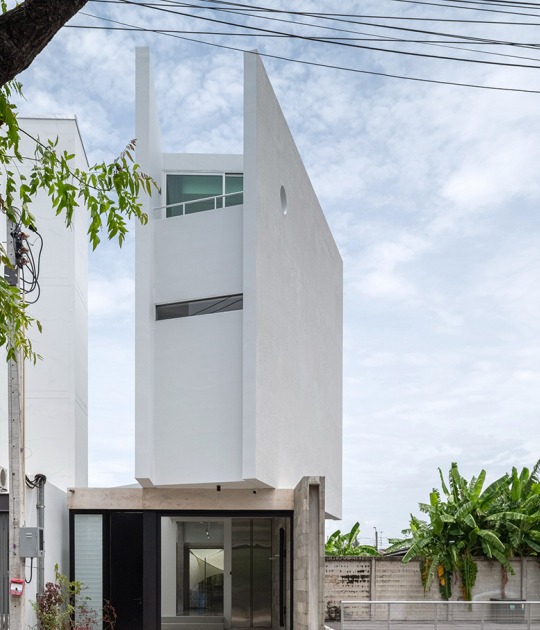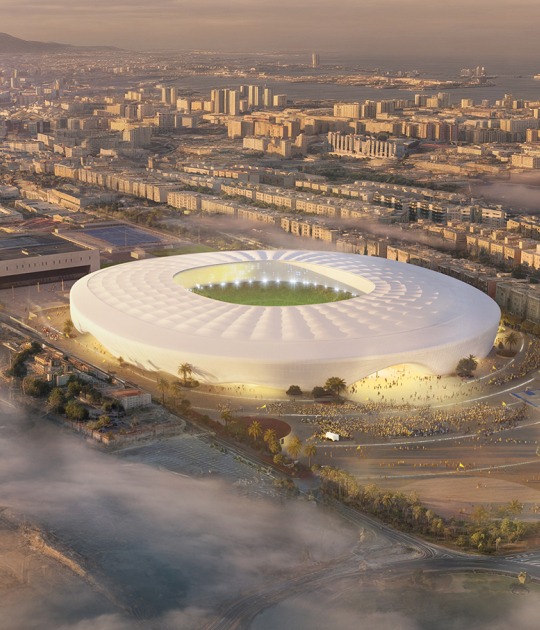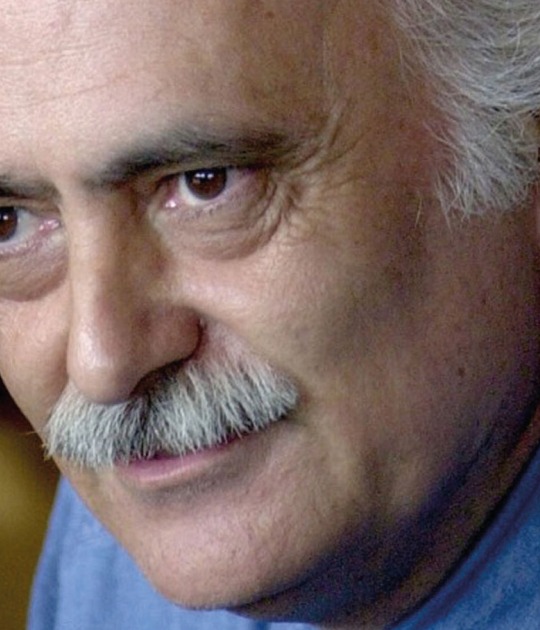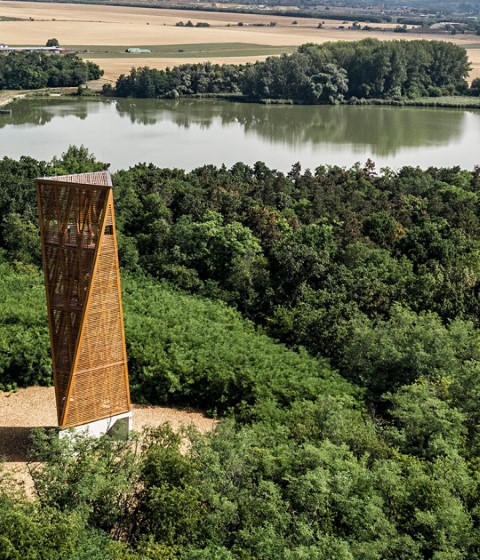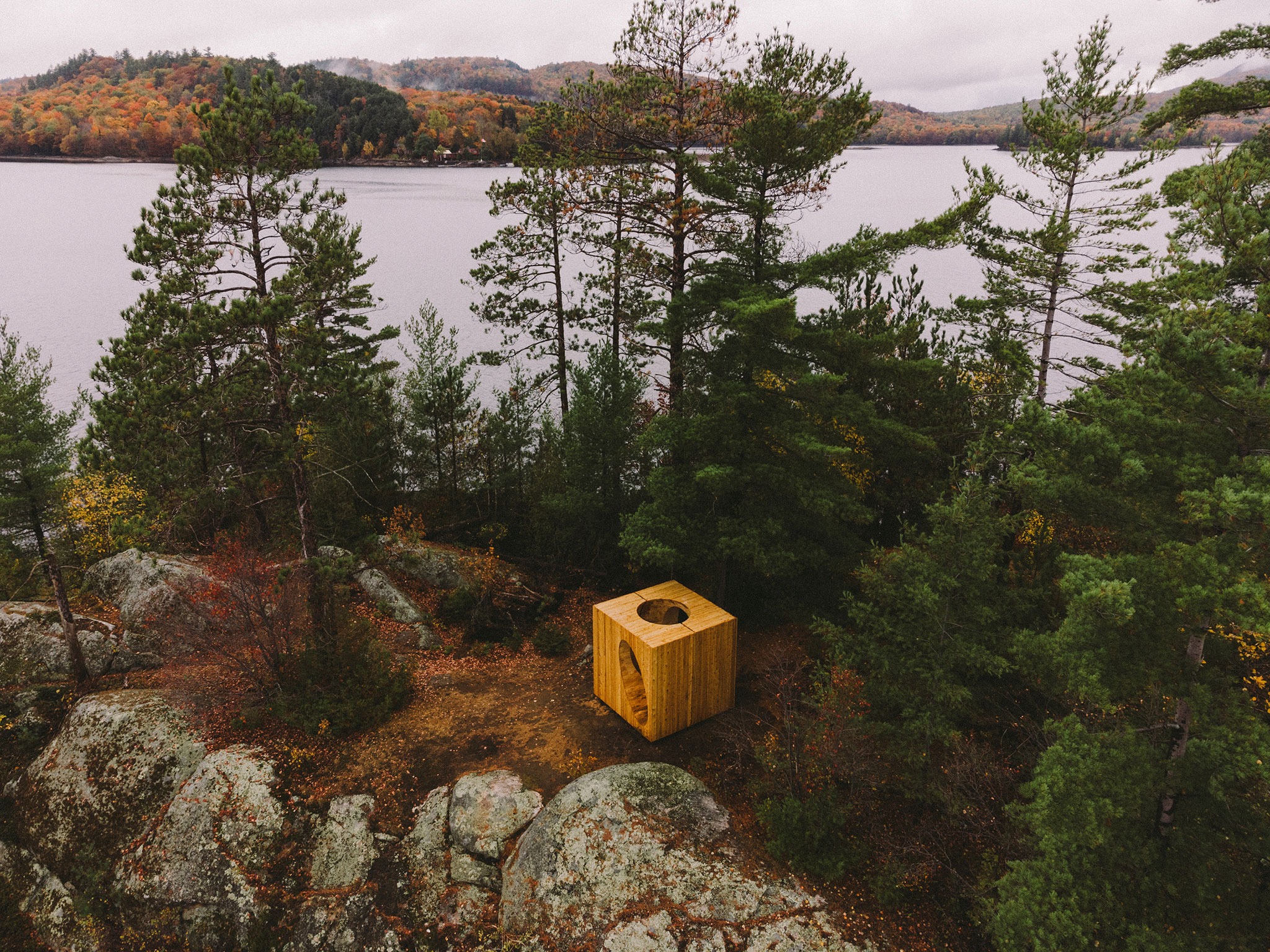
Luca Fortin and Atelier Mock/up are participating with Faire le vide in a broader initiative that seeks to transform the park into an open-air cultural destination. In this case, the installation is situated on a rocky base, isolated and difficult to access. Its location reinforces the idea of discovery, making the journey, whether by canoe or kayak, part of the experience. From the lake, the volume appears as a silent landmark that dialogues with the height of the forest and the rocky topography, in an integration that avoids monumentality.
The program is minimal: a space to be, to look, and to inhabit silence. It is embodied in a cubic volume of laminated cedar wood, completely prefabricated and hand-assembled on-site. Its orthogonal exterior, with vertical slats, establishes a visual relationship with the surrounding forest, while the milled interior displays organic forms and textures that reflect the imprint of the CNC tool. This duality of a rigid container versus a fluid interior establishes a perceptual tension that transforms technique into an aesthetic experience.
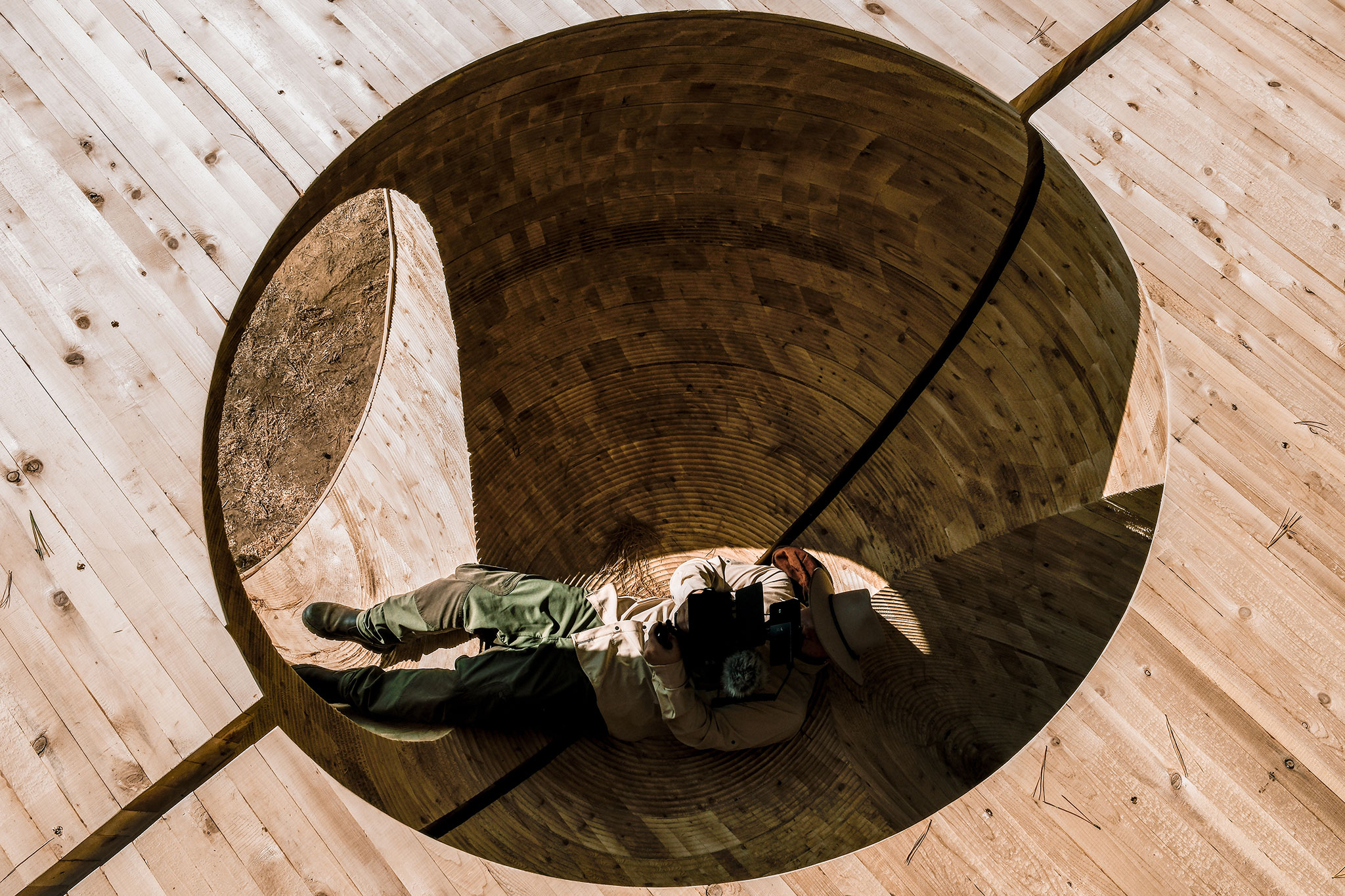
"Faire le vide" by Luca Fortin and Atelier Mock/up. Photograph by Behind Création.
Description of project by Luca Fortin and Atelier Mock/up
Perched atop a rocky promontory on a remote island, the Faire le vide public art installation unfolds across the vast landscape of Poisson Blanc Regional Park, in the municipality of Notre-Dame-du-Laus, Quebec. As the first in a series of artistic interventions on the park’s islands, the project — initiated by Poisson Blanc — aims to transform the reservoir into both an open-air destination and a cultural experience.
The work takes the form of a wooden cube: a minimalist, almost monolithic exterior that conceals an interior sculpted with flowing curves and intricate textures. It is the winning entry of a design competition, conceived by a team composed of artist and architect Luca Fortin and Atelier mock/up.

Born of a deep sensitivity to the site, the monolith was designed to blend seamlessly into its insular environment. Accessible only by water — by canoe or kayak — the installation reveals itself like a well-kept secret nestled in the heart of the reservoir. Viewed from the lake, its form and materiality act as a subtle landmark, inviting curiosity and encouraging exploration of Island No. 22.
The site’s constraints became opportunities for design innovation. Entirely prefabricated off-site, the structure was installed without the use of heavy machinery. Each wooden slab was transported by boat, then carried and assembled by hand. Faire le vide was deliberately designed and positioned to minimize its impact on the rocky outcrop and surrounding landscape.
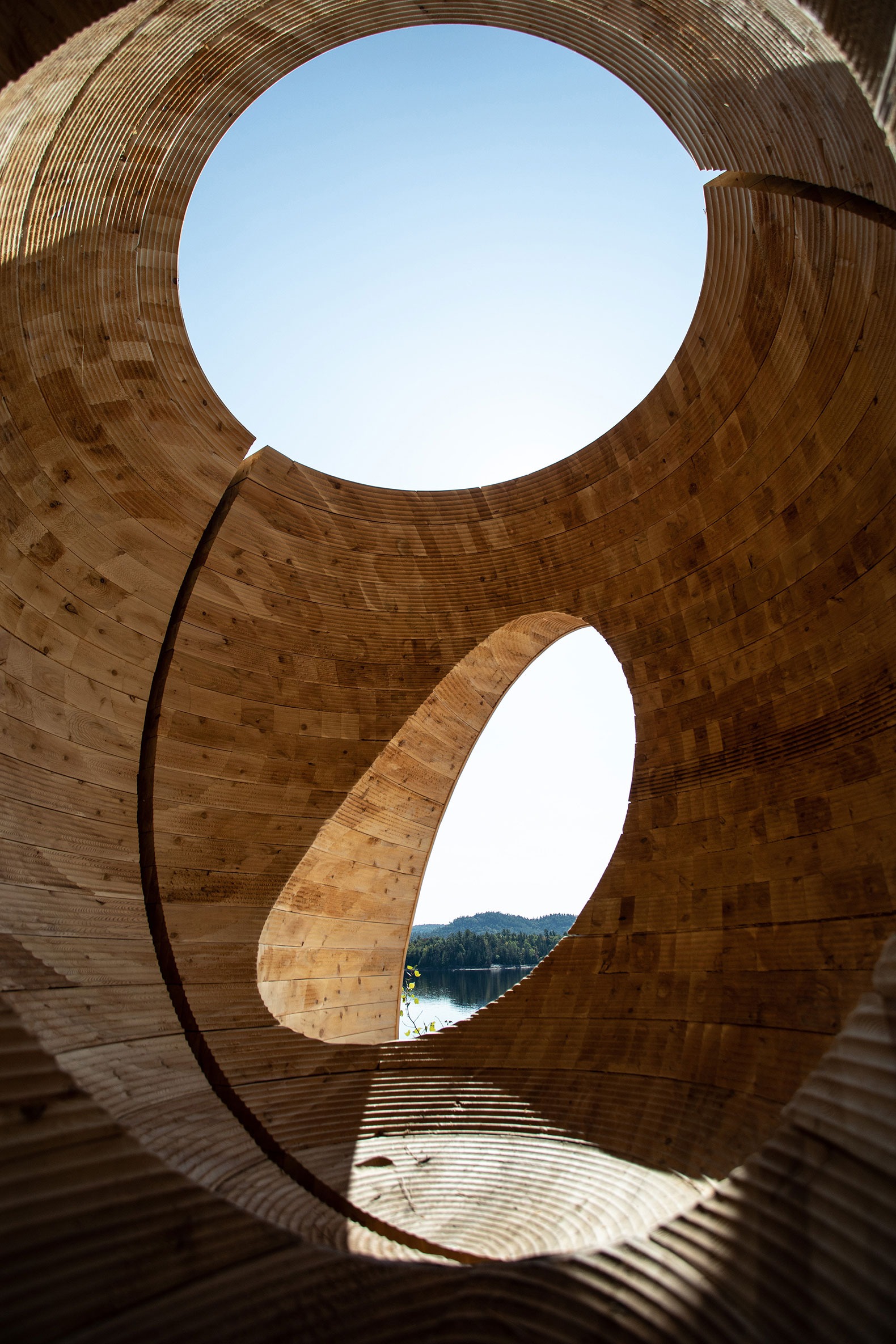
Crafted from laminated cedar, and CNC-milled, the structure was assembled piece by piece on site. Two distinct geometries emerge: an orthogonal outer shell and an organically expressive inner chamber. The exterior walls are clad in vertical slats that resonate with the upright stance of the surrounding forest, while the interior preserves the marks left by the milling tool — textures that evoke the wind’s ripples on the water’s surface. These toolpaths are the result of meticulous experimentation, where grooves and flutes demonstrate how industrial processes can be reimagined to create perceptual, poetic experiences.
Faire le vide is an encounter between place and craft, where art and fabrication intertwine. It weaves a dialogue between gesture, material, and the rhythm of the landscape — a threshold between the visible and the invisible that celebrates the poetics of place and time. The work reminds us that art can emerge where we least expect it: at a bend in a path, on an isolated island, between two breaths. In the simplicity of the present moment, it reveals its power to shift how we see the world.
